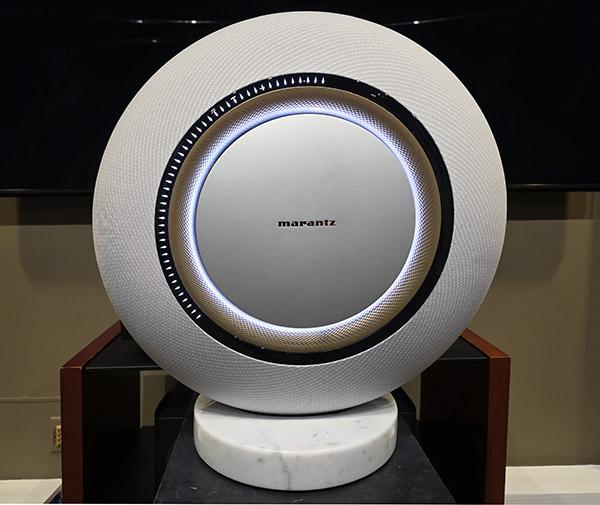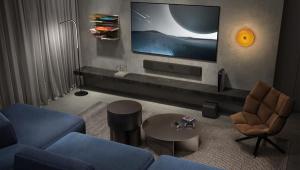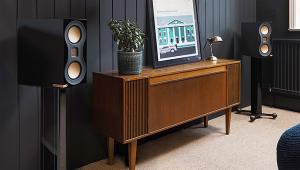Marantz’s Grand Horizon Aims to Marry Hi‑Fi Sound with Living‑Room Design

“We love traditional components,” Jones said, “but in a lot of people’s lifestyles that does not fit. The goal was: How do I offer great audio performance in something that looks beautiful?” According to Jones, the Grand Horizon “sounds as big and as robust as many hi‑fi systems,” but it packages the experience as furniture‑grade industrial design.
Design details carry the pitch. Marantz says it designed the drivers specifically for this system and matched them to a dedicated amplifier. The enclosure wears an eco‑friendly recycled fabric wrap and sits on a marble base. Inside, the low‑frequency system—“years in the making,” per Jones—is integral to the cabinet. “Think of it as a 3.1 sound system in a beautiful box,” he said. The claim: tangible, room‑filling bass and high output with minimal distortion.
The platform is unapologetically modern. Control is via the HEOS app with multi‑room support; Spotify Connect and Tidal Connect are onboard. Beyond basic EQ, HEOS exposes voicing presets that change the character of the presentation—amber warm to blue cool, for taste or taming a lively room. Placement profiles (corner vs. free‑space) and a “spaciousness” control let you choose between a tighter, more centered image and a wider soundstage.
Soundstage is central to the pitch. In Marantz’s demos, the Grand Horizon sits between two passive speakers “about nine feet apart,” Jones said. “People think when we play it, it’s those two speakers that are playing.” The system uses a center array plus angled side drivers with DSP to keep vocals locked while expanding lateral width. Jones was blunt about trade‑offs: “If you want to sit there between two speakers, get a component [system].” The promise here is different—credible stereo when you’re centered, convincing scale and balance when you’re not.
Use‑case thinking extends to who buys it. Jones sees three customers: the design‑led listener who wants great sound without gear clutter; the hi‑fi fan whose partner won’t accept racks and floorstanders in shared spaces; and the “party” household that wants whole‑room coverage without fuss. “It lets you get the quality you’re used to hearing in rooms where you normally aren’t allowed,” he said.
There are two models. The Grand Horizon lists at $5,500 and comes in three finishes (a dark “Midnight,” Champagne, and a white option) with the marble base. A smaller Horizon model shares the concept with a downsized woofer and power; it can be wall‑mounted or placed on an easel. Both models support stereo pairing—two Horizons flanking a fireplace, or even a pair of Grand Horizons for a more traditional left/right install.
Brief listening note: in a demo last week at World Wide Stereo near Philadelphia, I heard the Grand Horizon in a different, more controlled setting. There, I heard bass you can feel and a presentation with more depth and nuance than most “lifestyle” gear offers. It was one of those rare single‑enclosure demos that elicited goosebumps.
Context matters too. While Marantz is best known for its electronics, Jones emphasized that the company tapped group expertise across sister speaker brands during development. “Every driver…is designed for Marantz by Marantz,” he said, “but you can lean over to your buddy and ask Bowers or Polk or DT a question when you need to.” The result is a product that tries to bridge décor and dedicated listening without pretending to replace a purpose‑built two‑channel rig.
Bottom line: Grand Horizon is a luxury, design‑first wireless system that takes the “soundbar, but bigger” idea and pushes it toward hi‑fi territory—with app‑based voicing, placement tuning, and a deliberately wide sweet zone. If your room won’t accept separates but your ears still demand substance, it’s one to audition.














































